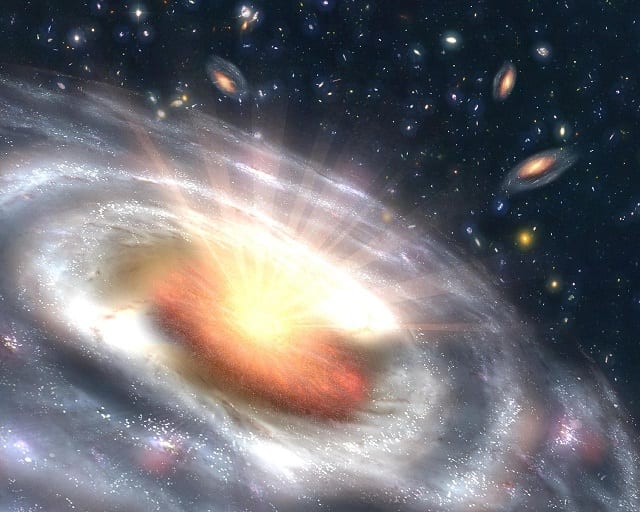. . . with emphasis on the vexing and complex question of the ultimate origins of matter and life

Dr. David Madison is an atheist who was a Methodist minister for nine years: with a Ph.D. in Biblical Studies from Boston University. You can see (by the number in the title) how many times I have replied to his videos or articles. Thus far, I haven’t heard one peep back from him (from 8-1-19 to this date). This certainly doesn’t suggest to me that he is very confident in his opinions. All I’ve seen is expressions of contempt from Dr. Madison and from his buddy, the atheist author, polemicist, and extraordinarily volatile John Loftus, who runs the ultra-insulting Debunking Christianity blog. Dr. Madison made his cramped, insulated mentality clear in a comment from 9-6-19:
[T]he burden of the apologist has become heavy indeed, and some don’t handle the anguish well. They vent and rage at critics, like toddlers throwing tantrums when a threadbare security blanket gets tossed out. We can smell their panic. Engaging with the ranters serves no purpose—any more than it does to engage with Flat-Earthers, Chemtrail conspiracy theorists, and those who argue that the moon landings were faked. . . . I prefer to engage with NON-obsessive-compulsive-hysterical Christians, those who have spotted rubbish in the Bible, and might already have one foot out the door.
John “you are an idiot!” Loftus even went to the length of changing his blog’s rules of engagement, so that he and Dr. Madison could avoid replying to yours truly, or even see notices of my replies (er, sorry, rants, rather). Obviously, I have “hit a nerve” over there. In any event, their utter non-responses (besides potshots) and intellectual cowardice do not affect me in the slightest. No skin off of my back. If I want to critique more of their material, I will. If my replies go out unopposed, all the better for my cause.
This is a reply to [certain not immediately ridiculous or baseless] portions of Dr. Madison’s article, The Christian Knack for Insulting Our Intelligence (9-1-17). Dr. Madison’s words will be in blue below.
*****
Sometimes even Sunday school kids have the presence of mind to ask, “But where did God come from?” To which the assurance is always given, “Well, God has always been there.” But rarely do the kids—or even the adults—ever ask, “But how do you know that?” How do you KNOW that about God? Without the evidence it’s just another assumption—one of so many that derail religious thinking.
We know it like we know many things: it’s ultimately backed up by solid philosophical analysis (hundreds of historical, well-known philosophers have believed in a eternal God and offered solid reasons for it), as well as by revelation, so that one can have a reasonable and well-grounded faith.
Bertrand Russell punctured this lazy conjecture when he pointed out that it’s just as easy to believe in a universe that has always existed—as it is to believe in a god that has been around, uncreated, forever.
Yes, precisely! I was gonna make this very point before I saw this sentence. Epistemologically (well, before we bring science into it), the two propositions are about equally as strong (which is hardly a huge debating point for atheism, if it’s only equally substantiated as Christianity):
1) God (a spirit) has existed eternally.
2) The universe (matter) has existed eternally.
But the problem with #2 is that it is no longer consensus science, because of Big Bang Theory, an expanding universe, and things like entropy. A spirit like God is obviously not within the purview of science, because it deals with matter. But the creative results of such a being can be studied. Russell (like Einstein) almost certainly accepted the steady state universe before Big Bang cosmology became the consensus.
Now this fundamental question of ultimate existence and origins is quite different in nature. I wrote in an article of mine that made atheists more furious (really, more confused, from where I sit), and which was more controversial than any other I have written:
Atheist belief is a kind of polytheistic idolatry of the crudest, most primitive sort, putting to shame the colorful worship of the ancient Babylonians, Philistines, Aztecs, and other groups. They believed that their silver amulets and wooden idols could make the sun shine or defeat an enemy or cause crops to flourish.
The polytheistic materialist, on the other hand, is far more religious than that. He thinks that trillions of his atom-gods and their distant relatives, the cell-gods, can make absolutely everything in the universe occur, by their own power, possessed eternally either in full or (who knows how?) in inevitably unfolding potentiality.
One might call this (to coin a phrase) Atomism (“belief that the atom is God”). Trillions of omnipotent, omniscient atoms can do absolutely everything that the Christian God can do, and for little or no reason that anyone can understand (i.e., why and how the atom-god came to possess such powers in the first place). The Atomist openly and unreservedly worships his trillions of gods, with the most perfect, trusting, non-rational faith imaginable. He or she is what sociologists call a “true believer.”
Oh, and we mustn’t forget the time-goddess. She is often invoked in worshipful, reverential, awe-inspiring terms as the be-all, end-all explanation for things inexplicable, as if by magic her very incantation rises to an explanatory level sufficient to shut up any silly Christian, who is foolish enough to believe in one God rather than trillions. The time-goddess is the highest in the ranks of the Atomist’s wonderfully varied hierarchy of gods (sort of the “Zeus” of Atomism). One might call this belief Temporalism.
But Christians don’t have a problem with God-just-always-was because—well, everything had to have been kicked off by a creator with a plan. That’s just common sense, right?
Yes, it’s just common sense and basic thinking rationality to assert that the universe and/or God have to be either eternal or to have originated at some point. That’s why all the atheists believed in an eternal universe, till established science (spearheaded by a Catholic priest-scientist, who submitted the Big Bang Theory, and was more advanced in his cosmological thinking on origins than Einstein was) made it virtually impossible to continue to hold such a position.
The [huge, momentous] trick is to determine which and what is true, and how it (and/or He) happened. What exists now has to be explained somehow. There is nothing the slightest bit silly about believing that God is eternal: anymore than the previous belief that the universe was eternal was “silly” and “laughable”: given the limitations of knowledge that were present when it was consensus. The cosmological theistic argument is arguably stronger than ever, in light of Big Bang cosmology.
And they look at atheists as if we’re crazy for not seeing that nature itself—with butterflies and sunsets—is proof of their god. When I hear that dodge, my word of caution is, “You don’t want to go there.” Because you have gained nothing, absolutely nothing, by giving a god the credit for “creating.”
Atheists do have quite a difficult task, in explaining a materialistic evolutionary origin of extraordinary processes, even on the cellular level, which is already almost inconceivably and inextricably complex (see, for example, the work of biochemist Michael J. Behe). Yeah, I would say that the old teleological (design) argument is stronger than ever, because we know much more about the nature of physical reality and of the building-blocks of life.
[N]o brand of Christianity has managed to let go of Loftus’ Number 8: “God has a morally sufficient reason for permitting all the evil that ever has or every will be.”
There are many robust explanations of the problem of evil (I offer many articles about it on my blog): none ever sufficient for atheists (but then, who would expect that they would be?). They are sufficient to at least suggest to open minds that there is a plausible and coherent explanation for why evil exists and why God allows it to, due to the requirements of true free will in human beings.
Loftus adds more perspective: “Christian theism has no more credibility than Scientology, Mormonism, Haitian Voodoo, or the southwest Pacific Ocean cargo cults, because they are all based on faith.” Thus we’d like to be able to say, “We rest our case: Christianity can be flushed.” Nothing can rescue it from the realm of the wildly improbable.
This is a prime example of a manifestly “ridiculous or baseless” portion of Dr. Madison’;s article that I usually ignore. I just pout it up to show readers what I was talking about. It is it’s own refutation.
But, of course, there are those who devote their careers to the effort. In the section of the essay titled, “Defending the Faith Makes Brilliant People Look Stupid,” Loftus turns to consideration of those who have mastered the art of “double standards, non sequiturs, special pleading, begging the question, or just plain ignorance.” These are the professional apologists who, like alchemists, try to transmute “wildly improbable” into “rationally believable.” He offers a survey of the work of Alvin Plantinga, William Lane Craig and Richard G. Swinburne.
It’s sad that atheists like Madison and Loftus can’t comprehend an opinion different from their own (theism or Christianity) that is honestly and sincerely (and intelligently) held. I readily grant their own honesty and sincerity. I simply hold that they are dead wrong, and labor under many demonstrably false premises. A little later, Dr. Madison characterizes William Lane Craig’s thinking as “evil . . . ugly” and indicative of “the Christian knack for insulting our intelligence.”
This is a particularly acidic offering from Dr. Madison: one of a long line of similar ramblings, but more intense and intellectually facile and vacuous, and it deserves no more attention than I have already given it. Perhaps he had a bad hair day or an ingrown toenail . . .
***












